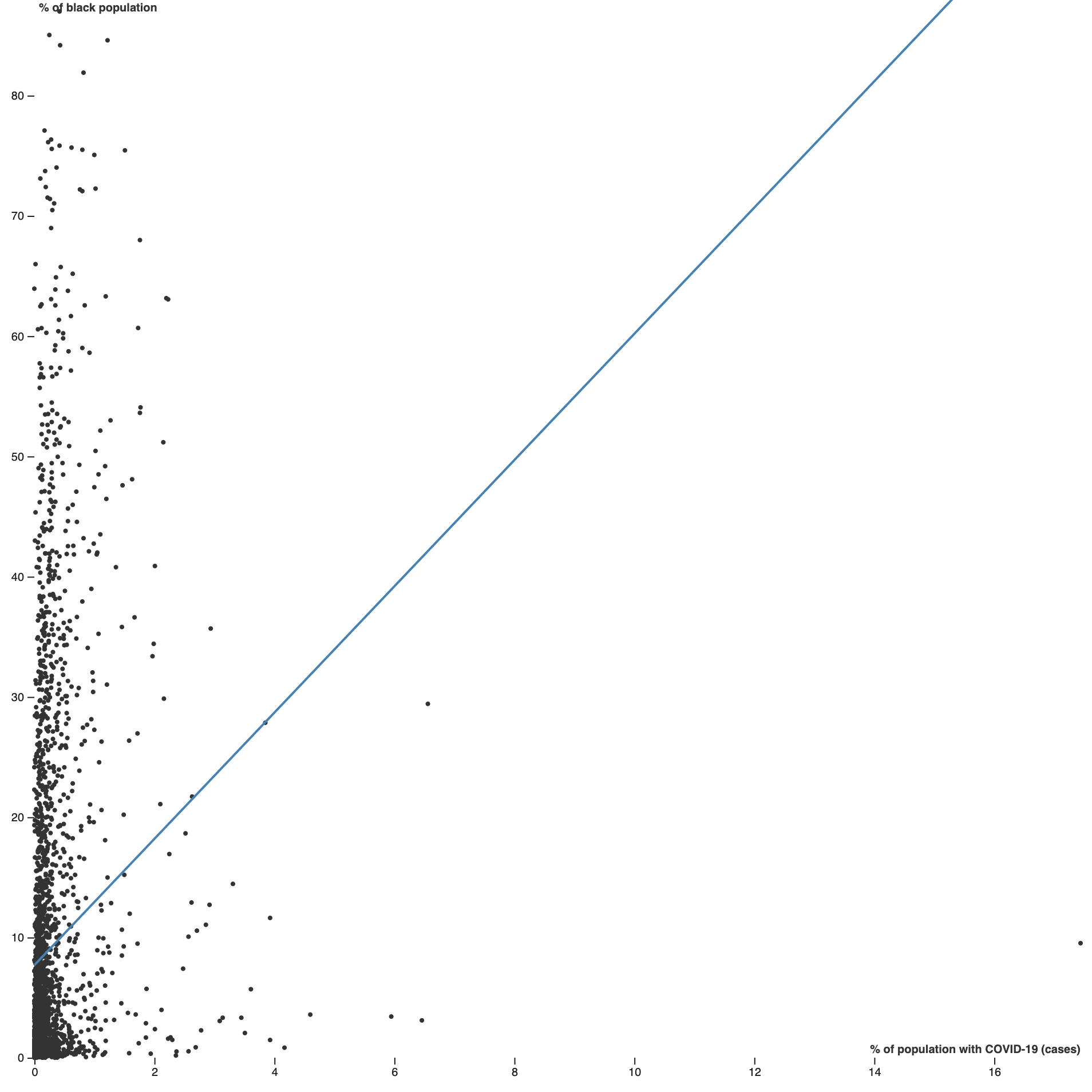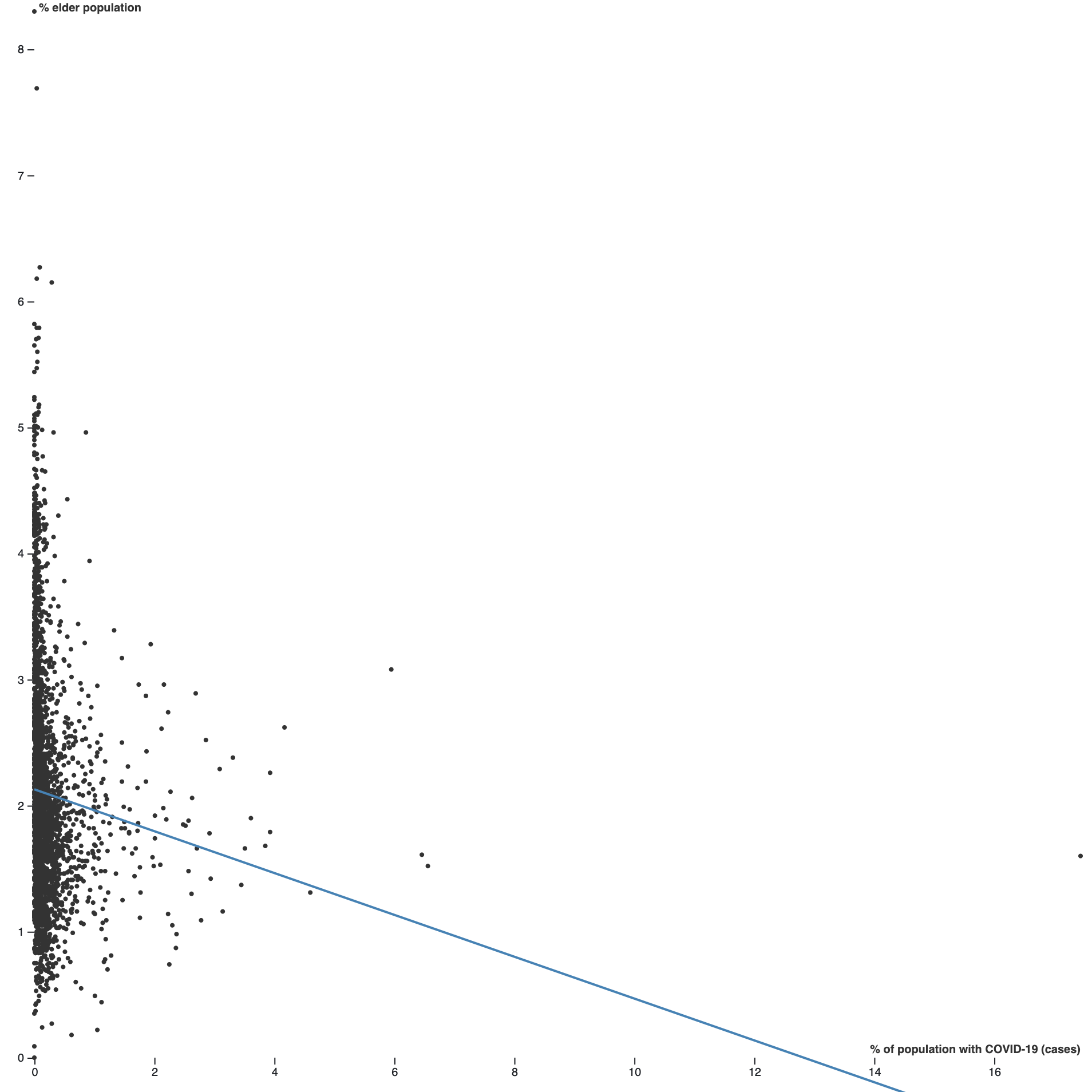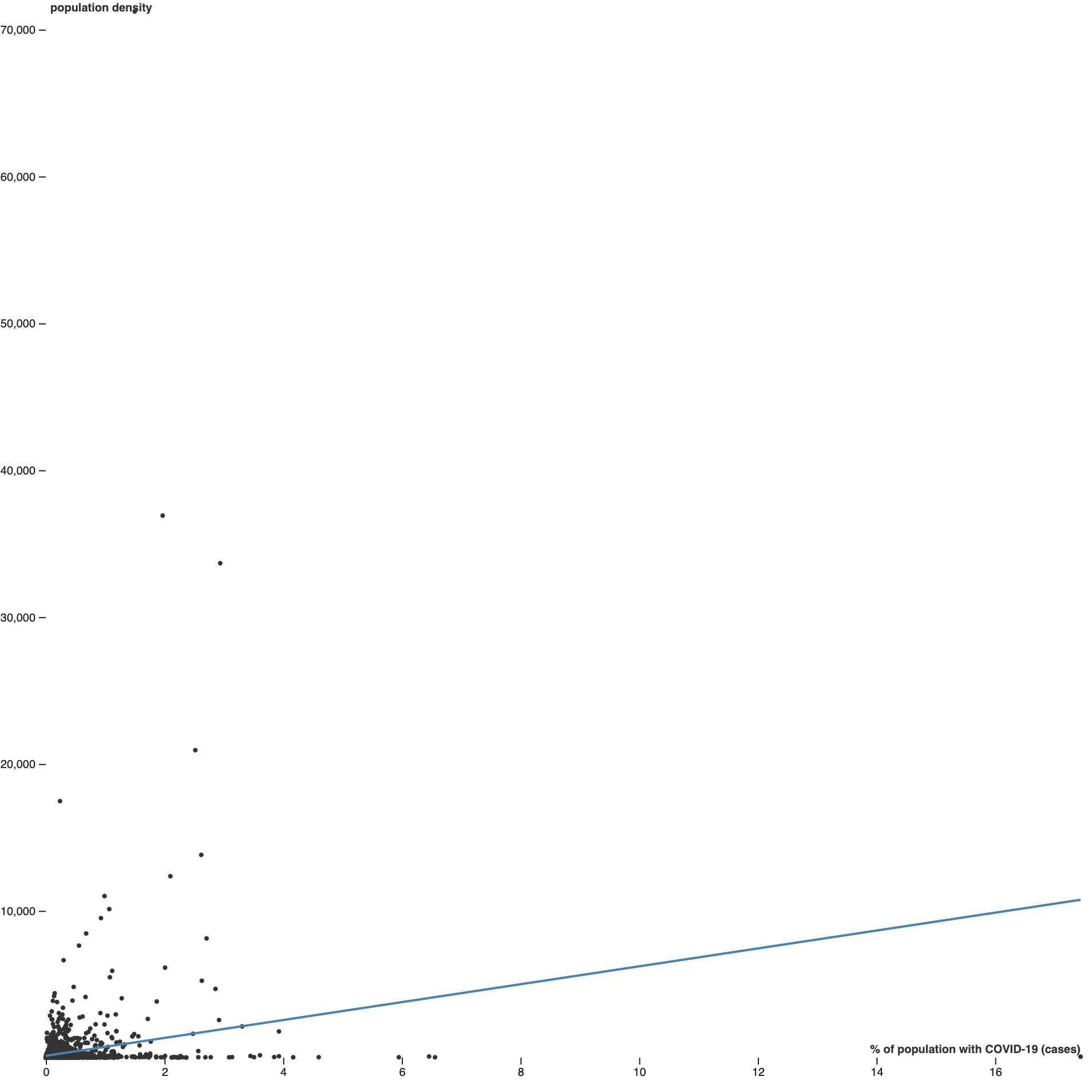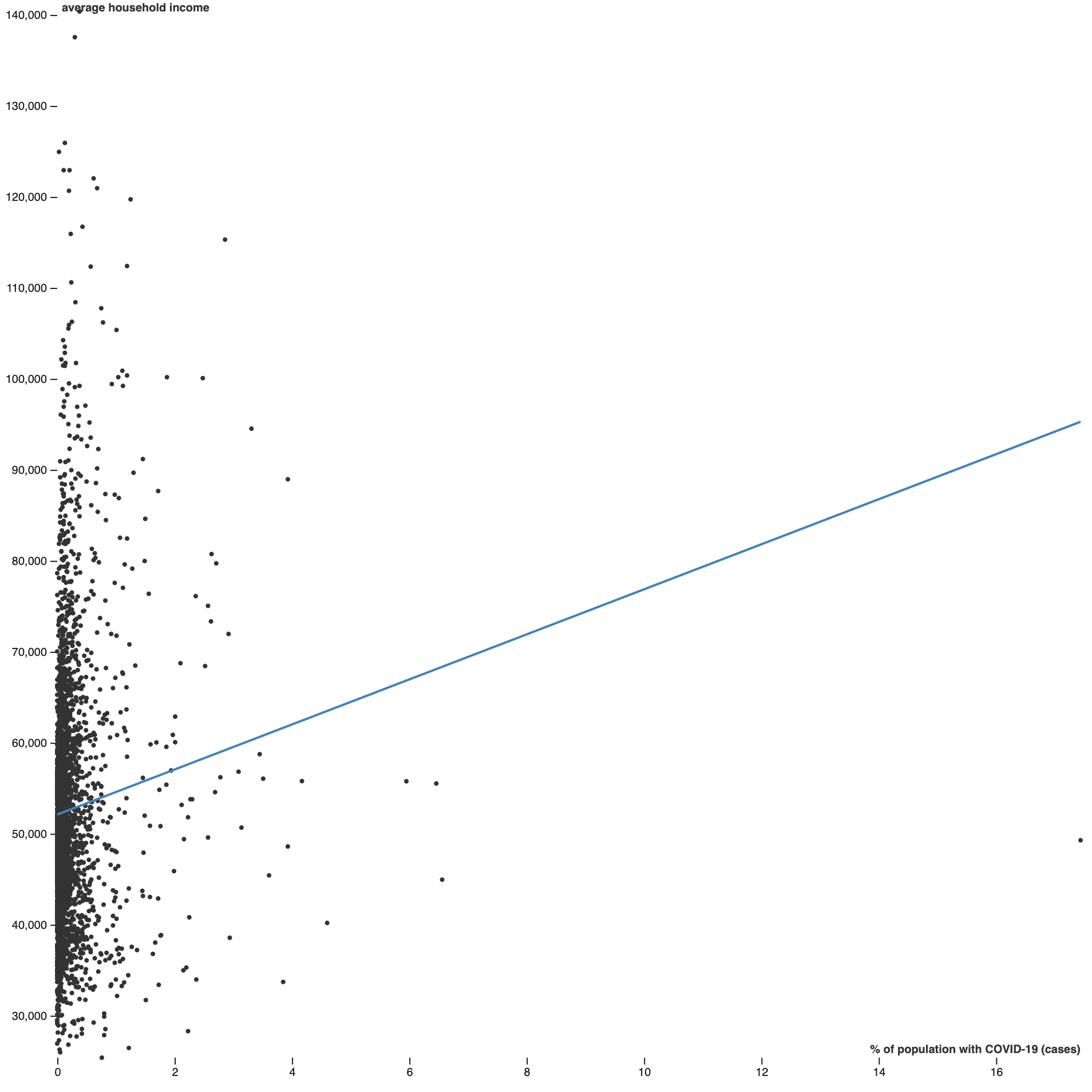Scatterplots are used to visualize the relationship between two variables. Scatterplots are read from left to right to understand how one variable can affect the other. If the line increases from left to right, the scatterplot indicates that there is a positive correlation between variables; therefore, as one variable increases so does the other. If the line decreases from left to right across the scatterplot, there is a negative correlation between variables; therefore, as one variable increases, the other decreases. Points that don't seem to follow a linear pattern have a weak correlation or no correlation at all. These scatterplots are used to display the relationship between COVID-19 cases recorded from January 22nd to May 13th, 2020, and four different vulnerability factors by county in the U.S.; percent black population, percent elder population, population density, and avergae income. The trends displayed in the scatterplots can be used to understand what demographics are most at risk and therefore should recieve extra consideration when developing public health policies to increase protection of these populations.



